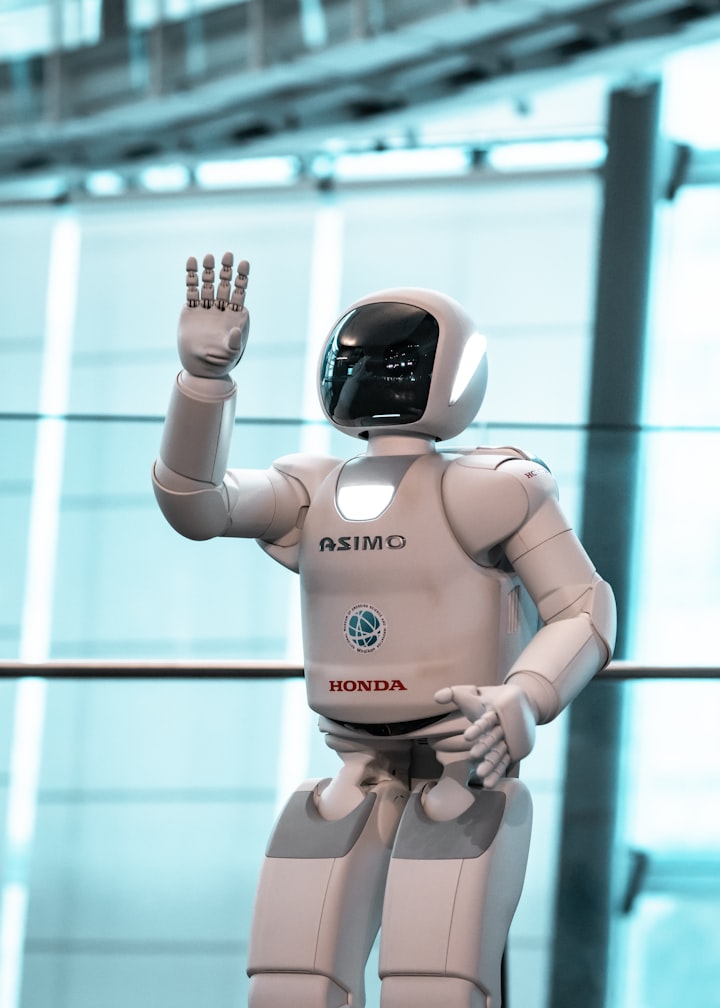Robotics: Looking to the Future
A resource essay discussing the use of robots for practical purposes.

Disclaimer: This article is based on an unused essay I was going to turn into an English Composition class back in 2013. I had a bit of inspiration for a different area of study back then, so I saved this in my email for future use.
I can try to cover the bibliography if requested.
When one thinks of the word “Robot”, chances are the mind instantly evokes the image of a tall, silver, humanoid object that only speaks in “beeps” and “boops” and has a desire to destroy humanity and conquer the world, but in many ways the concept of a real-life robot is far more complicated than that. Real robots can best be described as tools, used to make human life easier, and enhance our way of living. To most, the use of robotics will define the future in a multitude of ways, through military use, assembly lines, and even food service. In the future, whether for military use, service, or other ways, robots may be a large part of society as a whole.
According to the article “A History of Robots: From Science Fiction to Surgical Robotics” from the Journal Of Robotic Surgery, the term “Robot” was coined either in 1917 by author Joseph Capek or in 1921 by his brother Karel Capek, a playwright, for his play Rossum's Universal Robots, the word “robot” being derived from the Czech word “robota”, which means “servant” or “laborer”. Years later, starting in 1938, American author Isaac Asimov wrote a series of short stories in which he created three “laws” of robotics, which dictate that: a robot cannot harm humans, it must obey orders given to it by humans, and must defend itself as long as doing so doesn't conflict with the first or second laws (Journal Of Robotic Surgery, 2007). From the 1950's to the modern day, robots have played a prominent part in science fiction films, from the Star Wars series to the Terminator franchise, and as recent as the Transformers series, and continue to have a strong impact on the world through pop culture.

Real life robotics, however, have yet to reach the point of advancement and self-awareness seen in the realm of science fiction. For all intents and purposes, many robots nowadays are used simply for running assembly lines, making cars and other large machines. Other things that can classify as robots are merely child toys, following commands set through the use of remote-controlled devices and small voice commands for the more advanced versions. In the near future however, as the article “Cooperative Manipulation and Transportation with Aerial Robots”, written by members of the University of Philadelphia predicts, robots may have a strong presence in transportation. The article discusses the idea of using multiple remote-controlled robots at once to carry large loads across vast distances, much like a helicopter with a winch, with each one carrying their own weight of the load (roboticsproceedings.org). However, these are merely devices controlled by humans, not artificially intelligent life-forms as of yet.
Artificial Intelligence (or AI) is prevalent in the 2004 film I, Robot, starring Will Smith, which portrayed a future inspired by the works of Isaac Asimov's short stories. The film, while science fiction in its entirety, depicts a relatively realistic take on the idea of robotics and their civil rights. Most of the robots in the film are portrayed as machines of servitude who cannot break the Three Laws of Robotics, until the appearance of “Sonny” who is an advanced robot capable of having his own dreams and ideals, and is capable of choosing to ignore the Laws if he wants to (20th Century Fox). This possibility of advanced Artificial Intelligence is possible, and is being worked on currently according to the article named “A Concept of a Reliable Three-Layer Behaviour Control System for Cooperative Autonomous Robots”. This article was written by members of both the University of Bremen Robotics Research Group as well as the DFKI GmbH Robotics Innovation Center, and details the concept of robots learning autonomy through interactions with each other for use in environments no human can enter (Christian Rauch, et al, 2012).
Robots in the future may come in a variety of shapes and sizes for all unique purposes. As Nature.com's article, “Molecular robots guided by prescriptive landscapes” states, there exists the concept of microscopic nanomachines, capable of traversing environments invisible to the naked eye. These machines will be able to work together, following miniature “bread crumb” trails set out by the developers (Nature.com). Also, while the article does not state this, these nanomachines may have a possible use in the field of medical technology. They may be programmed with the ability to hunt down and destroy harmful cells within the human body that cause diseases such as cancer, the flu, and perhaps even the common cold. While the theory behind these particular robots involves following paths laid out before them, other, larger robots would also be able to rely on visual cues and line-of-sight.

In “LQG-MP: Optimized Path Planning for Robots with Motion Uncertainty and Imperfect State Information” from The International Journal of Robotics Research, the article states that scientists at the University of North Carolina as well as the University of Califonia are trying to create a new technology to aid robots in avoiding obstacles on paths through the use of sensors (2011). A similar study was also described in the article “Reliable Indoor Navigation on Humanoid Robots
using Vision-Based Localization” from HAL Archives. This article states that similar vision-based path-finding experiments were underway to allow robots to not only move in obstructed environments but also pick up and place objects on their own (HAL Archives 2012). The robots mentioned in both of these articles, when the full goal of their autonomy is realized, could navigate cluttered, obstructed areas including, perhaps, battlefields.
Christopher Hagis, in his paper “History of Robots” for Wagner College, said that “Robots were created to help humans, especially in high risk or dangerous situations. A robot can deactivate a bomb, go to the edges of an active volcano, transport dangerous materials, explore the ocean floor and even perform tasks in the most hostile environment known to man: space.” (History of Robots, 2003) However, some uses of the technology, which started out helpful, have evolved into a much darker aspect than their original intention. According to the document “Special Weapons Observation Remote recon Direct Action System (SWORDS)” from NATO, after the terror attacks on the World Trade Center, a four man search-and-rescue team was sent in to find survivors. A Non-Commissioned Officer who led the search was asked to draw up an armed platform based around the robotic device. After some changes, the SWORDS was finally completed. The SWORDS, or “Special Weapons Observation Remote recon Direct Action System”, is a small robot used for carrying out military missions across the globe, playing “primary and secondary roles” in missions. It is used remotely by an operator from a distance, using five cameras to give a good field of view. (Kim Jones 2007) It is quite possible that, in the future, these types of robots will fill the battlefields, removing the need for humans. Perhaps one day, all the wars of the world will be fought in front of computers, or through automated robots who walk and act much like a human.

The probability of humanoid robots are increased every day through new technology. The motor company Honda, has spent years making an autonomous android called the “Advanced Step in Innovative MObility”, or ASIMO for short. According to the Honda site for Asimo, they started work on a walking robot in 1986, and has since been developing a walking robot for everyday use. Since their first work on the robot, Honda technicians have given ASIMO the ability to perform actions such as walk up and down stairs, navigate uneven surfaces, and hold objects with robotic hands. Their hope for the future is to give people who are elderly or have been struck with a disability assistance in their day-to-day life (asimo.honda.com). ASIMO's successful development, in some ways, could give leeway to other humanoid robots in the near future.
It is quite possible, thanks to the ever-present advancements in technology, that robotic companions will be a common sight in the future, continuing to help humanity in many ways. Medicine, military, police, and all types of people across the world would be touched by the use of these mechanical helpers. In this generation or next, people all over the world could simply ask their respective robotic compatriots to do errands for them.
About the Creator
N.J. Folsom
There's a whole universe in my head, just waiting to be written.
If you like my stories, please consider donating to my PayPal to help me keep writing!






Comments
There are no comments for this story
Be the first to respond and start the conversation.